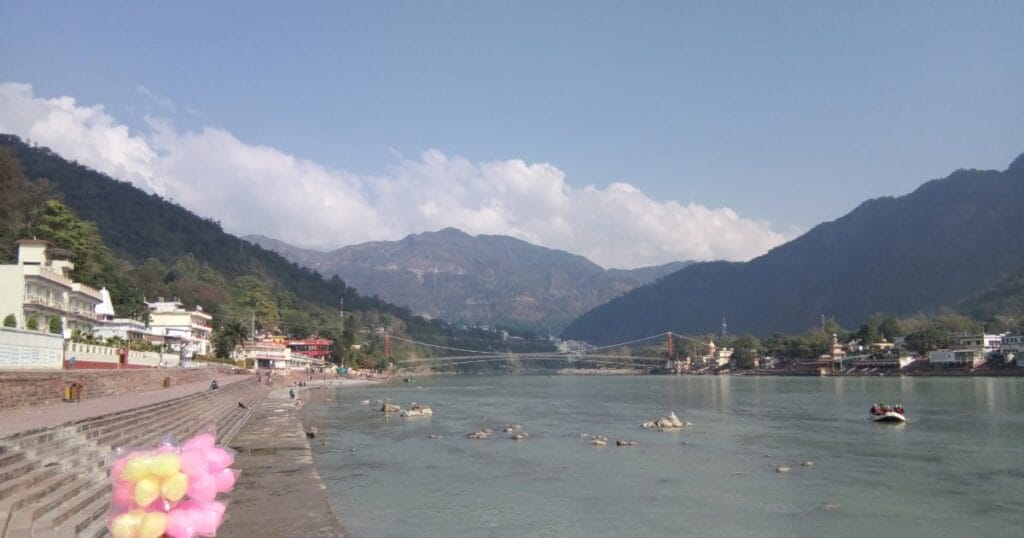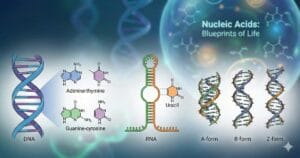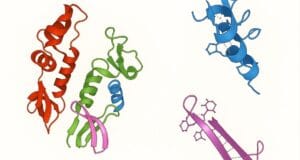
COMPETITIVE EXAM MCQs SERIES of ENVIRONMENTAL SCIENCE for UGC-NET/JRF, SLET, ARS, GATE, and other entrance tests – Contemporary Environmental Issues: Water Conservation and Watershed Development.
Syllabus Outline
- The Importance of Water Conservation in Environmental Sustainability.
- Traditional and modern methods of water conservation (e.g. Rainwater harvesting, check dams, percolation tanks, farm ponds, rooftop harvesting systems)
- Concept and Principle of Watershed Development.
- Components of watershed management.
- National Watershed Development Project for Rainfed Areas, Watershed Development Fund, and Mahatma Gandhi National Rural Employment Guarantee Scheme support.
- Challenges in water conservation and watershed development
This quiz contains concept-based, most frequently asked 25 MCQs of “Contemporary Environmental Issues: Water Conservation and Watershed Development”. Each question has a single correct/most appropriate answer.
*****
1. What is a watershed?
A) An area receiving uniform rainfall above a river valley and converging to a common river
B) A region where all water flowing into it converges to a common outlet
C) A wet area near a common water outlet commonly used for agriculture
D) A land area that is saturated or flooded with water, either permanently or seasonally
2. What is the main purpose of a check dam in watershed management?
A) Generate hydroelectric power
B) Convert the lotic ecosystem to a lentic condition to facilitate carbon sequestration
C) Temporarily hold runoff water to recharge groundwater
D) Divert the River flow into irrigation canals to facilitate agricultural activities
3. The National Watershed Development Project for Rainfed Areas (NWDPRA) was launched in India in:
A) 1980–81
B) 1990–91
C) 2000–01
D) 2010–11
4. Under the Mahatma Gandhi National Rural Employment Guarantee Act (MGNREGA), which of the following is a permissible natural resource management work for water conservation?
I – Digging farm ponds
II – Renovation of traditional ponds
III – Construction of check dams
IV – Installing solar panels for energy generation
A) I only
B) I and II
C) I, II and III
D) I, II, III and IV
5. Which of the following is an in-situ soil and water conservation measure in watershed management?
A) Contour bunding and Check dams
B) Contour bunding and Broad bed and furrow systems
C) Check dams and Farm ponds
D) Farm ponds and Broad bed and furrow systems
6. Which one of the following is NOT typically a component of watershed management programs?
A) Entry Point Activity for community mobilisation
B) Land and water conservation practices
C) Crop diversification and intensification through improved seeds
D) Construction of large dams for hydropower generation for the community
7. Which of the following is an ex-situ water conservation measure?
A) Contour bunding and mulching
B) Check dams and farm ponds
C) Conservation of soil moisture by plant roots
D) Rainwater harvesting on rooftops
8. Which of the following is an example of a watershed conservation entry-point activity?
A) Direct cash payments to farmers with no strings attached in the watershed area
B) Community mobilisation through knowledge-building projects in the watershed area
C) Building irrigation canals to enhance agricultural activities in the watershed area
D) Infrastructure development in the watershed area to facilitate in-situ conservation
9. Assertion (A): Integrated Nutrient Management is an important component of watershed management.
Reason (R): INM increases crop productivity by providing a balanced nutrient supply in watershed areas.
A) Both A and R are true, and R explains A.
B) Both A and R are true, but R does not explain A.
C) A is true, R is false.
D) A is false, R is true.
10. Which of the following are key elements of watershed management?
I – Soil and water conservation
II – Afforestation and grassland development
III – Pest management practices
IV – Community participation in planning
A) I and II only
B) I, II and III only
C) I, II and IV only
D) All of the above
11. Which of the following statements about watershed development is true?
I – It involves an integrated approach combining soil and water conservation with livelihood improvements.
II – It originated as a paradigm shift away from earlier plot-level soil conservation methods.
III – It considers both biophysical and socio-economic factors in planning.
IV – It focuses on the construction of large dams for water storage and groundwater recharge in the watershed area.
A) I only
B) I and II
C) I, II and III
D) I, II, III and IV
12. Which of the following pairs is correctly matched regarding watershed management terms?
I – Ridge-to-valley approach – implementing treatments starting from the highest slope and moving downstream
II – Grassroots approach – working at the district council level
III – Plot-based approach – focus on a watershed as a unit
IV – Participatory approach – including state government input
A) I only
B) I and II
C) I and III
D) I, II, III and IV
13. Which of the following factors are challenges specifically noted in watershed development projects?
I – Ensuring equity among landowners and landless people
II – Sustaining community participation and interest
III – Centralisation of all decision-making at the national level
IV – Lack of any monitoring mechanisms
A) I and II only
B) I, II and III only
C) III and IV only
D) All of the above
14. Consider these statements about MGNREGA’s role in watershed management:
I – MGNREGA funds have been used to build tens of thousands of ponds and check dams across India.
II – MGNREGA mandates that at least 60% of its expenditure is on NRM (agriculture/allied works).
III – MGNREGA funds industrial projects to improve water supply.
IV – MGNREGA supports plantation, bunding, and soil conservation works.
Which statements are TRUE?
A) I, II and IV only
B) I and III only
C) II and IV only
D) All of the above
15. Which statement is NOT true regarding percolation tanks?
A) They are earthen or masonry embankments built across drainage lines to store runoff for infiltration.
B) They increase groundwater recharge by holding water longer on porous soils.
C) They work best in very high rainfall regions with annual precipitation above 2000 mm.
D) None of the above
16. Which of the following falls under non-structural approaches of water conservation?
I – Crop rotation to enhance soil moisture retention
II – Legal restrictions on groundwater drilling
III – Construction of check dams
IV – Community training on water-saving practices
A) I and II only
B) I, II and IV only
C) I and IV only
D) I only
17. Which of the following is a common challenge encountered in watershed projects?
A) Unavailability of funds.
B) Local participations.
C) Lack of monitoring.
D) Environment being ignored.
18. Under Jal Shakti Abhiyan (2019), which two major funding sources were mobilised for water conservation?
A) Mahatma Gandhi National Rural Employment Guarantee Act (MGNREGA) and Compensatory Afforestation Fund Management and Planning Authority (CAMPA)
B) Watershed management funds and Namami Gange
C) Anusandhan National Research Foundation (ANRF) and The Central Ground Water Authority (CGWA)
D) Ministry of Drinking Water and Sanitation (MoDWS) and Integrated Water Resources Management (IWRM)
19. Which of the following is NOT an intervention area explicitly tracked under Jal Shakti Abhiyan?
A) Renovation of traditional and other water bodies
B) Intensive afforestation and Kisan fairs
C) Development of renewable energy sources
D) Water conservation and rainwater harvesting structures
20. In the context of agricultural water use, an effective conservation strategy is to:
I – Shift from high water-intensive to less water-intensive.
II – Shift from long-duration crops to short-duration crops.
III – Avoid crop diversification in water-scarce areas.
IV – Use flood-irrigation methods in water-scarce areas.
A) I only
B) I and II
C) I, II and III
D) I, II, III and IV
21. Which traditional Indian water-harvesting structure, known locally as “Johads,” played a key role in recharging aquifers in Rajasthan?
A) Step-wells constructed for rainwater harvesting in the village
B) Earthen farm ponds in forests to capture surface runoff and improve groundwater recharge
C) Small village ponds excavated to capture monsoon runoff
D) Construction of underground cisterns to facilitate aquifer recharge
22. Which of the following schemes is focused on rural water conservation and was implemented in Rajasthan in convergence with MGNREGA funds?
A) Jal Jeevan Mission
B) Mukhyamantri Jal Swavlamban Abhiyan
C) Smart Village Mission
D) Sujalam Sufalam Jal Abhiyan
23. Which of the following is highly crucial for sustainable watershed development?
A) Technical and Scientific solutions with local input
B) Community-driven planning and local ownership of interventions
C) Rapid short-term construction of large assets to avoid loss of the local community
D) Consideration of gender and equity issues
24. India’s Atal Bhujal Yojana (Atal Jal) is a scheme focusing on:
A) Expanding rural groundwater supply pipelines
B) Community-based groundwater management
C) Subsidising groundwater supply for rural areas
D) Subsidised deep bore-well to facilitate extractions of groundwater
25. The Groundwater (Sustainable Management) Bill 2017 in India aimed to address groundwater depletion. A recommended measure in this context is:
A) High water tax on groundwater pumping
B) Mandatory rainwater harvesting structures for large users
C) Complete restrictions on deep bore-wells in areas having sufficient surface water available
D) Subsidised low water-intensive and short-duration crop seeds
*****
Previous: Environmental Issues of Water Resource Projects
Next: Rainwater harvesting and Groundwater recharge
References
- R. Rajagopalan (2015) ENVIRONMENTAL STUDIES: FROM CRISIS TO CURE, Oxford University Press, Third edition
- Bharucha, E. (2013). Textbook of Environmental Studies. Universities Press, 3rd edition
- Abha Vashistha and Surabhi Johari (2020). Contemporary Environmental Issues and Challenges, Bloomsbury Prime
- William Cunningham and Mary Cunningham (2009) Environmental Science: A Global Concern, McGraw-Hill Education, 11th edition

